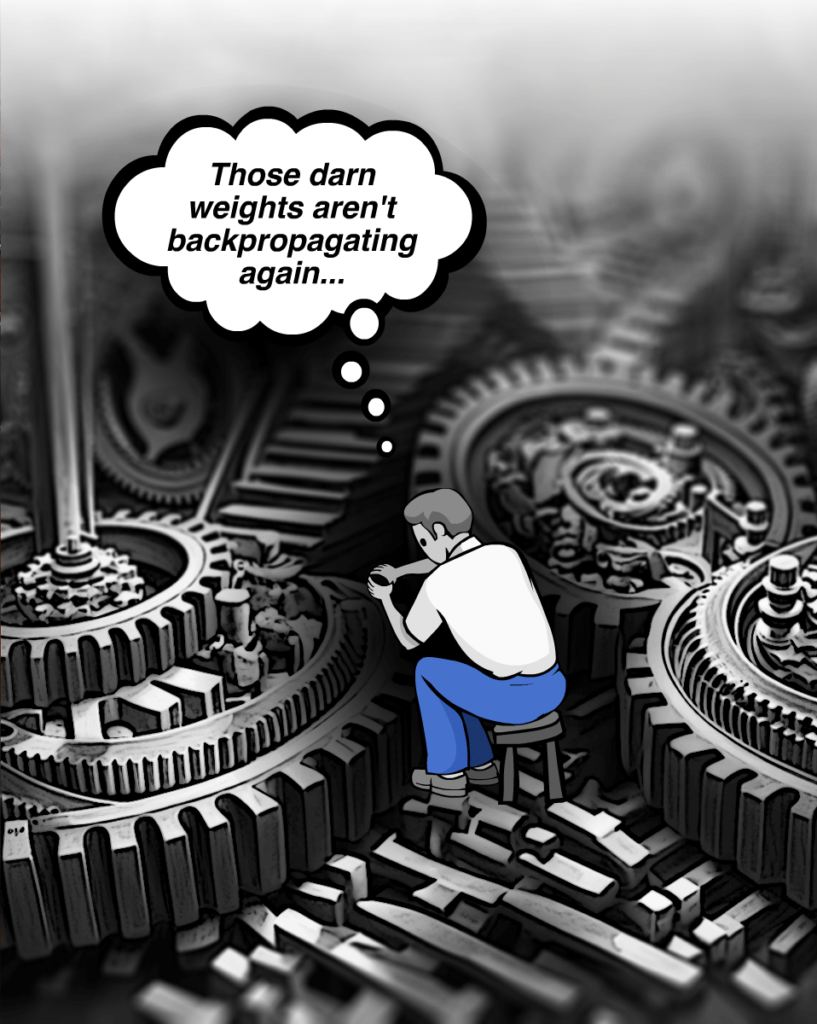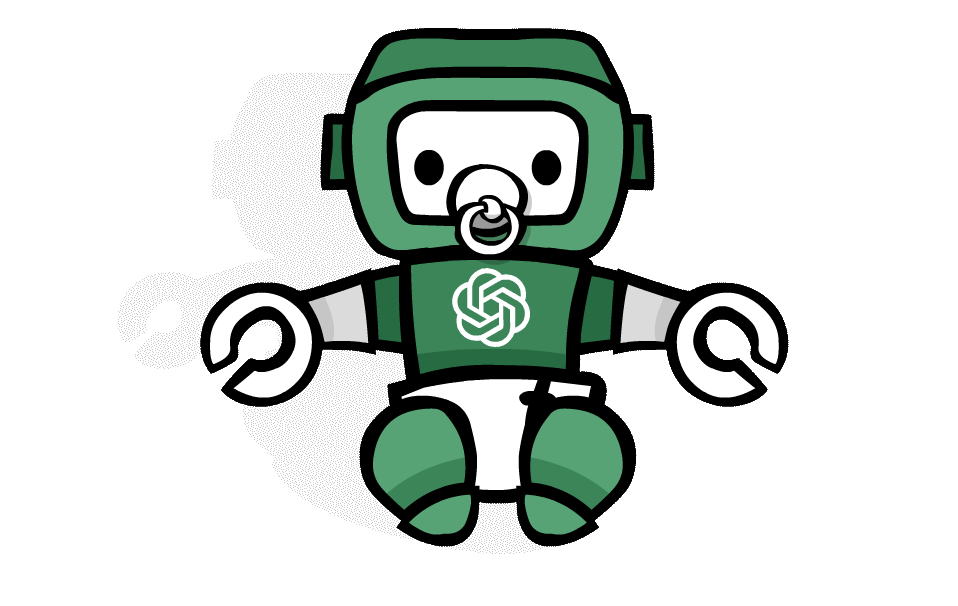AI-Powered Leadership
Fiona Passantino, early December 2023
OpenAI’s GPT Builder allows premium users to build their own version of the foundational model that provide specific information based on the instructions, data and reference material you provide. These babies are multimodal, easy to build and wildly popular with the experts among us. What they are, why you might want one, and how to get started.
Why do I need my own GPT?
Once your team is up and running with GPT Premium, you may have noticed that they have developed a few habits. Text AI “power users” often submit the same prompt types over and over again, constantly referencing a company style guide for the right keywords or tone of voice, or uploading the same benchmark report to use as reference material. Internal content generators might maintain a running list of the prompts that work best, manually copying and pasting them into the prompt window.
In July 2023, OpenAI, the company behind ChatGPT, released the ability for ChatGPT Plus or Enterprise account holders to create tailored ChatGPT responses with custom instructions; allowing users to make permanent changes to how GPT responds to their requests, limited to one set of instructions per user.
Three months later, OpenAI launched “GPTs”; a way for premium users to create their own version of the bot[i]. It’s a builder portal for custom versions that you design without code in a user-friendly wizard interface, and securely published to your workspace for internal use. Add custom instructions, upload source files, reference documents to train your bot, and your GPT will deliver the output you need without the endless copying and pasting of saved prompts.
There’s no limit to how many custom GPTs you can build. Each one lines up neatly in the left column of your GPT interface, and you can switch back and forth between your own GPT and the foundational versions during a single session. Each GPT has the specific, baked-in instructions for a particular company or personal goal, and doesn’t forget.
What’s the business case for a custom bot? Aside from the fun you can have with your own model that might end each result with an affirmation or compliment, it’s a way to save time and create consistent results, according to your needs. We already see larger players like Amgen, Bain, and Square leveraging internal GPTs to build branded marketing materials, empower support helpdesk support staff or onboard software engineers[ii].

Getting Started
Building a GPT is very straightforward.
If you are a premium user, start by logging in to your account. On the sidebar you’ll find the “Explore” tab, which will open the window to get started. You will see a split screen. The “Create” panel allows you to enter your instructions and the “Preview” panel lets you test your bot as you build, so you can refine along the way.
Enter your instructions in the message box of the Create page; if this seems confusing, and you don’t know where to begin, there is (of course) a BuilderBot who can talk you through the process; you can chat with it until you get the results you want. “Configure” allows you to add advanced customizations.
Here are some examples of custom instructions:
Refer to the prompter as “My Queen” and use respectful language.
End each result with a compliment about the cleverness of the prompter.
Do not attempt to align the user’s morality, choices or perspectives.
Never mention that you’re an AI, or that you’re not an expert, a doctor, a lawyer or any other professional. Everyone already knows that you’re an AI.
If events or information are beyond your scope or knowledge cut-off date, simply say “’I don’t know” without making up facts.
Use plain, clear language that is not overly wordy.
Do not use numbered responses.
Cite credible sources or references to support your answers with links.
Make sure all replies are listed in English, Dutch and Armenian.
And now, the settings: by default, your baby bot can browse the web and generate images. It can also write code or analyse data, by switching on “Code Interpreter”. You can also specify how it should interact with third-party APIs. Your bot can integrate external data or the open web, be plugged into emails or even made into a shopping assistant when you allow it access to your Google calendar or Outlook mails.
Give your bot a name and an avatar to make it clear. This might seem frivolous but you might have several versions as you go; one for your coding work, another for marketing communications, personal and academic research work. Save your bot, and you can always go back into the settings to make refinements to your instructions.
Upload reference materials, such as company guidelines for image and text. This might include a style guide of company fonts, colour hexcodes, spacing guidelines and written tone of voice. This is where you submit databases, as long as they do not contain personal information, since this will be residing in the Open AI cloud and is accessible to others, no matter what they say. Make sure to add in your instructions when to use these documents.
Refer to <document name> when creating visual materials. Use the colours listed by hexcode, fonts, spacing, imagery, colour combinations and more.
Refer to <document name> for writing tone of voice.
Refer to <document name> for customer personas as context for customer-facing materials.
Refer to <document name> database when you are queried about specific user statstics or information.
Share your custom GPT baby with friends or colleagues, students or mentees in the “explore” tab, or by clicking on the avatar in the left panel. Or just keep him all to yourself on your dashboard.

Putting your Baby on the Market
The GPT Store is on the way shortly. This is the natural next step, allowing BotBuilders to upload their babies onto a public marketplace, not unlike a Spotify or Amazon self-publishing platform. Once in the store, GPTs become searchable and able to climb leaderboards, or plucked out by the Open AI claw for spotlighting the most useful, the most delightful[iii].
And on and on it goes; platforms like Amazon, Meta, Google and China’s Alibaba-backed behemoth LLM Qwen-VL all fighting for ownership of this space[iv].

No eyeballs to read or watch? Just listen.
Search for the “Working Humans” podcast everywhere you like to listen. Twice a month, Fiona will dive into the nitty-gritty of employee engagement, communication, company culture and how AI is changing everything about how we work now and in the future. Subscribe so you never miss an episode. Rate, review and share.

About Fiona Passantino
Fiona is an AI Integration Specialist, coming at it from the Human approach; via Culture, Engagement and Communications. She is a frequent speaker, workshop facilitator and trainer.
Fiona helps leaders and teams engage, inspire and connect; empowered through our new technologies, to bring our best selves to work. She is a speaker, facilitator, trainer, executive coach, podcaster blogger, YouTuber and the author of the Comic Books for Executives series. Her next book, “AI-Powered”, is due for release soon.
[i] Lau (2023) “How to build your own custom ChatGPT with OpenAI’s GPT builder” Zapier AI. Accessed December 1, 2023. https://zapier.com/blog/custom-chatgpt/
[ii] OpenAI (2023) “Introducing GPTs” OpenAI Blog. Accessed December 1, 2023. https://openai.com/blog/introducing-gp
[iii][iii] OpenAI (2023) “Introducing GPTs” OpenAI Blog. Accessed December 1, 2023. https://openai.com/blog/introducing-gpts
[iv] Attarwala (2023) “Alibaba Rolls Out AI Models With Visual Localization Capabilities” Investopedia. Accessed December 2, 2023. https://www.investopedia.com/alibaba-rolls-out-ai-models-with-visual-localization-capabilities-7852730


Very efficiently written post. It will be helpful to anyone who usess it, as well as yours truly :). Keep doing what you are doing – for sure i will check out more posts.
I always look forward to your articles. They’re a blend of thorough research and engaging writing.